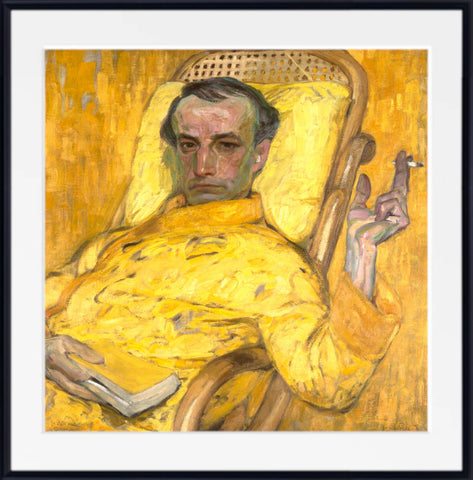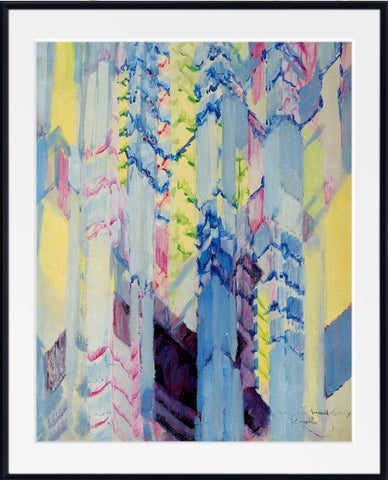Frantisek Kupka - Pioneer of Orphism and Abstract Art
Table of Contents:[hide]
František Kupka, a name perhaps not as widely recognized as Picasso or Mondrian, yet his contributions to the world of art are no less significant. Born on September 23, 1871, in Opočno, Austria-Hungary (now in the Czech Republic), Kupka was a visionary painter and graphic artist who played a pivotal role in the early phases of the abstract art movement. In this blog post, we delve into the life, works, and legacy of this pioneering figure in the world of abstract art.
Biography
František Kupka's journey into the realm of art began with a traditional education at the Academy of Fine Arts in Prague, where he initially focused on painting historical and patriotic themes. However, it was his later studies in Vienna that exposed him to symbolic and allegorical subjects, setting the stage for his exploration of deeper artistic expressions.
Education and Influences
During his formative years, Kupka's artistic sensibilities were greatly influenced by the painter and social reformer Karl Wilhelm Diefenbach, as well as his immersion in theosophy and Eastern philosophy. His move to Paris in 1894 marked a significant turning point, where he further honed his craft at the Académie Julian and the École des Beaux-Arts, ultimately finding his artistic voice amidst the vibrant cultural milieu of the city.
World War I and Beyond
Kupka's artistic pursuits were briefly interrupted by his service as a volunteer in World War I, a period that left an indelible mark on his psyche and informed some of his later works. Despite the challenges of war, Kupka remained steadfast in his commitment to his craft, eventually returning to Paris to continue his artistic exploration.
Career and Evolution of Style
Throughout his career, Kupka's work underwent a remarkable evolution, transitioning from representational art to increasingly abstract forms. His fascination with color theory and the interplay of shapes and motion led to the development of his own distinct visual language, culminating in iconic pieces such as "Amorpha. Fugue à deux couleurs" and "The Cathedral."
Personal Life and Spiritualism
Beyond his artistic endeavors, Kupka's personal life was marked by a deep-seated interest in theosophy and spiritualism. His belief in thought-forms and experiences with clairvoyant trances undoubtedly influenced his artistic vision, adding layers of complexity to his already enigmatic works.
Legacy and Recognition
Despite facing initial resistance to his avant-garde approach, Kupka's contributions to the art world have since been widely recognized and celebrated. His works continue to inspire artists and enthusiasts alike, with notable pieces fetching significant prices at auctions and earning a place in prestigious collections worldwide.
In conclusion, František Kupka's legacy as a pioneer of abstract art remains as vibrant and relevant today as it was during his lifetime. Through his daring experimentation and unwavering commitment to artistic exploration, he forged a path that continues to inspire generations of artists to push the boundaries of creativity and imagination.
Frantisek Kupka - FAQ's
-
Who was František Kupka?
- František Kupka (1871–1957) was a Czech painter and graphic artist, renowned for his pivotal role in the early phases of the abstract art movement.
-
What is Orphic Cubism (Orphism), and how was Kupka involved?
- Orphic Cubism, also known as Orphism, was a movement characterized by vibrant colors and geometric shapes. Kupka was a pioneer and co-founder of this movement, which sought to express spiritual ideas through abstract art.
-
What influenced Kupka's artistic development?
- Kupka's artistic development was influenced by a variety of factors, including his education in Prague and Vienna, exposure to symbolic and allegorical subjects, and his immersion in theosophy and Eastern philosophy.
-
How did Kupka's style evolve over time?
- Initially trained in traditional painting, Kupka's style evolved towards abstraction, influenced by color theory and the interplay of shapes and motion. His works transitioned from representational art to pure abstract forms, reflecting his unique artistic vision.
-
What was Kupka's experience during World War I?
- Kupka served as a volunteer in World War I, an experience that left a lasting impact on his psyche and informed some of his later works. He faced challenges, including frostbite, but remained committed to his artistic pursuits.
-
What are some notable works by Kupka?
- Some of Kupka's notable works include "Amorpha. Fugue à deux couleurs," "The Cathedral," and "The Yellow Scale." These pieces showcase his mastery of color, form, and abstraction.
-
What role did spiritualism play in Kupka's life and art?
- Kupka was deeply interested in spiritualism and theosophy, beliefs that influenced both his personal life and artistic vision. He practiced as a spiritualist medium and incorporated elements of clairvoyant experiences into his artwork.
-
How has Kupka's legacy been recognized?
- Despite initial resistance to his avant-garde approach, Kupka's contributions to the art world have been widely recognized and celebrated. His works continue to inspire artists and fetch significant prices at auctions.
-
Where can one view Kupka's artworks?
- Kupka's artworks can be found in museums, galleries, and private collections worldwide. Institutions such as the Museum of Modern Art in New York City and the Centre Pompidou in Paris feature his works in their collections.
-
What impact has Kupka had on the art world?
- Kupka's impact on the art world extends beyond his pioneering role in abstract art. His fearless experimentation and commitment to artistic exploration have inspired generations of artists to push the boundaries of creativity and imagination.























